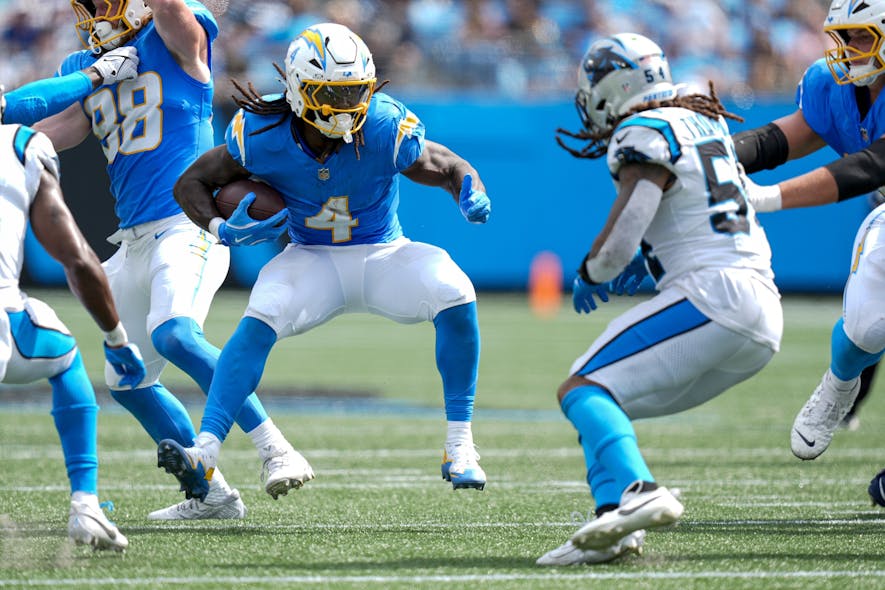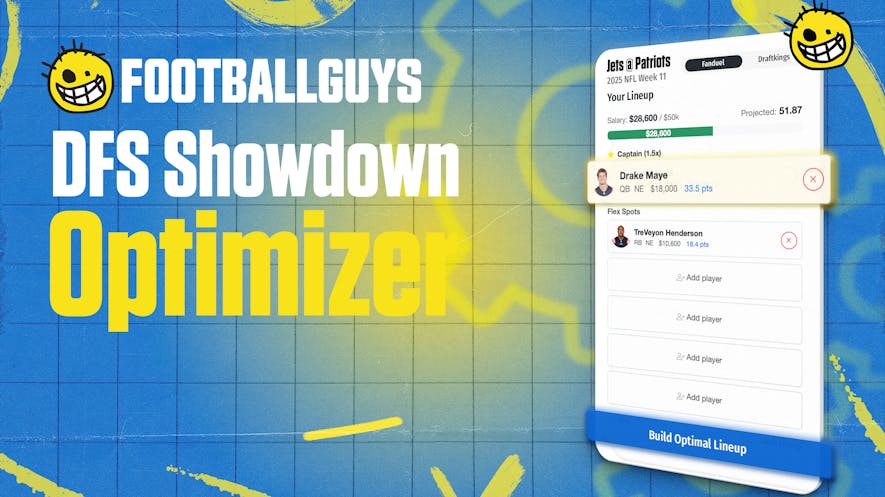Welcome to Regression Alert, your weekly guide to using regression to predict the future with uncanny accuracy.
For those who are new to the feature, here's the deal: every week, I break down a topic related to regression to the mean. Some weeks, I'll explain what it is, how it works, why you hear so much about it, and how you can harness its power for yourself. In other weeks, I'll give practical examples of regression at work.
In weeks where I'm giving practical examples, I will select a metric to focus on. I'll rank all players in the league according to that metric and separate the top players into Group A and the bottom players into Group B. I will verify that the players in Group A have outscored the players in Group B to that point in the season. And then I will predict that, by the magic of regression, Group B will outscore Group A going forward.
Crucially, I don't get to pick my samples (other than choosing which metric to focus on). If I'm looking at receivers and Justin Jefferson is one of the top performers in my sample, then Justin Jefferson goes into Group A, and may the fantasy gods show mercy on my predictions.
And then because predictions are meaningless without accountability, I track and report my results. Here's last year's season-ending recap, which covered the outcome of every prediction made in our seven-year history, giving our top-line record (41-13, a 76% hit rate) and lessons learned along the way.
Our Year to Date
Sometimes, I use this column to explain the concept of regression to the mean. In Week 2, I discussed what it is and what this column's primary goals would be. In Week 3, I explained how we could use regression to predict changes in future performance-- who would improve, who would decline-- without knowing anything about the players themselves.
Sometimes, I point out broad trends. In Week 5, I shared twelve years worth of data demonstrating that preseason ADP held as much predictive power as performance to date through the first four weeks of the season.
Other times, I use this column to make specific predictions. In Week 4, I explained that touchdowns tend to follow yards and predicted that the players with the highest yard-to-touchdown ratios would begin outscoring the players with the lowest.
The Scorecard
| Statistic Being Tracked | Performance Before Prediction | Performance Since Prediction | Weeks Remaining |
|---|---|---|---|
| Yard-to-TD Ratio | Group A averaged 17% more PPG | Group B averages 27% more PPG | 2 |
I said last week's 57% edge wasn't going to hold, and it hasn't; our "high-touchdown" receivers reached the end zone a bit more than our "low-touchdown" receivers last week (though between byes and injuries, 25% of our Group A and 40% of our Group B receivers didn't play a snap).
Group B's huge advantage in Week 4 still more than offsets Group A's smaller advantage in Week 5; Group B leads Group A in yards per game and touchdowns per game. It is also averaging fewer yards per touchdown, though both are well within the "sustainable band" at the moment.
What Use is Yards per Carry?
Yards per carry is one of the most beloved statistics for judging running backs. Jamaal Charles has never averaged below 5 yards per carry in a season where he's had at least 20 carries*; therefore, Jamaal Charles is a star. Trent Richardson had 1300 yards from scrimmage and 12 touchdowns as a rookie, ranking as a top-10 fantasy back, but his 3.6 yards per carry was an early warning sign that he would eventually be regarded as a colossal bust.
*(Technically, Charles averaged 4.97 yards per carry in 2013, but what's a few hundredths of a yard among friends?)
I've written more about Trent Richardson before, back in 2014, when another young rookie had just had a high-volume, low-YPC season that had everyone drawing parallels and claiming he was destined to disappoint. I wrote that, based on history, maybe we shouldn't be writing off this Le'Veon Bell fellow quite so quickly.
Indeed, the list of high-volume, low-YPC rookie running backs was basically Trent Richardson and a who's who of Hall of Famers or almost Hall of Famers. In addition to Richardson (3.56 ypc) and Bell (3.52 ypc), there's LaDainian Tomlinson (3.65), Ricky Williams (3.49), Walter Peyton (3.46 ypc), Emmitt Smith (3.89 ypc), Matt Forte (3.92 ypc), and Marshawn Lynch (3.98 ypc).
Even the guys on the high-volume, low-YPC list who didn't go on to be All-Pros typically had several quality fantasy years in them. Karim Abdul-Jabbar, Travis Henry, Errict Rhett, and Joe Cribbs all followed up their "inefficient" rookie season with a top-12 fantasy campaign as a sophomore, Sammie Smith improved across the board and finished as RB18, and Jahvid Best looked (and produced) like a star before injuries derailed his career.
Since I wrote that article in 2014, Melvin Gordon III also found himself on the "wrong" side of the ledger with an awful rookie ypc of 3.48. Fearing the shade of Trent Richardson, many owners sold low on the "inefficient" Gordon after a "disappointing" rookie season, only to see him rank 3rd in fantasy points (nearly 20% ahead of fourth place) from 2016-2018.
Indeed, other than Richardson himself, the only running back who had a high-volume, low "efficiency" rookie season and followed it up with a disappointing sophomore campaign was James Jackson, who also happens to be the only back in the sample to average below 3 yards per carry as a rookie, (2.84), and whose team thought so little of him that they drafted William Green in the first round to replace him.
What is going on here? Why is having a terrible rookie yard-per-carry average such a positive sign for a player's career? The truth is that a poor yard-per-carry average isn't a positive sign. It just isn't a negative one, either. I'm providing a list of high-workload rookies with low yards per carry, and the high-workload part is the real key.
Backs get a high workload because the coaching staff thinks they're good and wants to give them the ball. In the long run, backs who coaching staffs think are good and want to give the ball... tend to be pretty good. The low ypc, in the meantime, is just a meaningless fluke.


